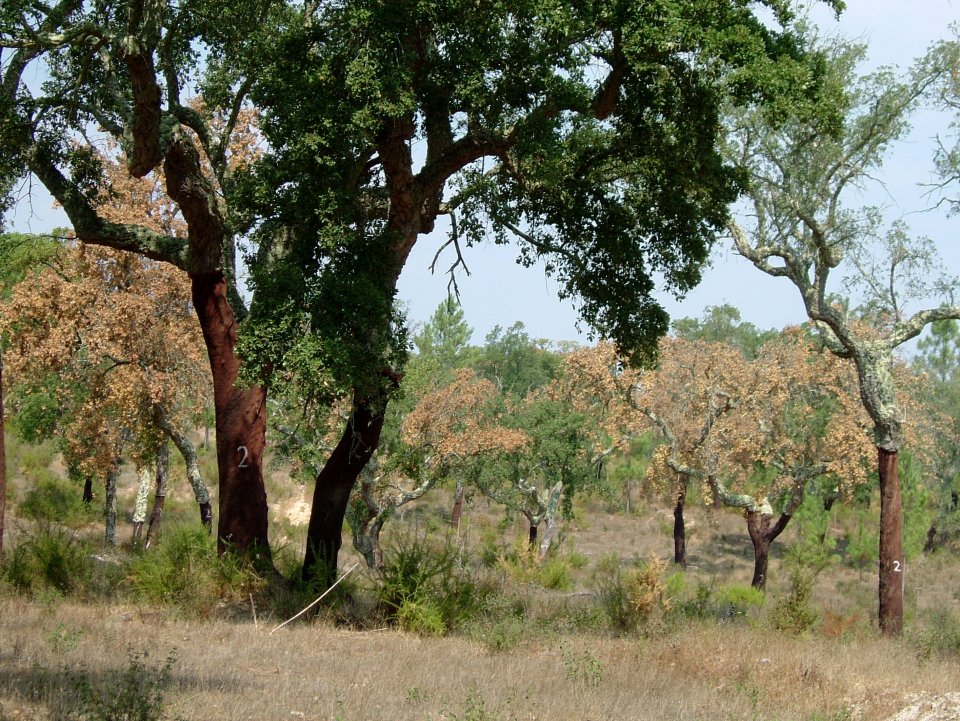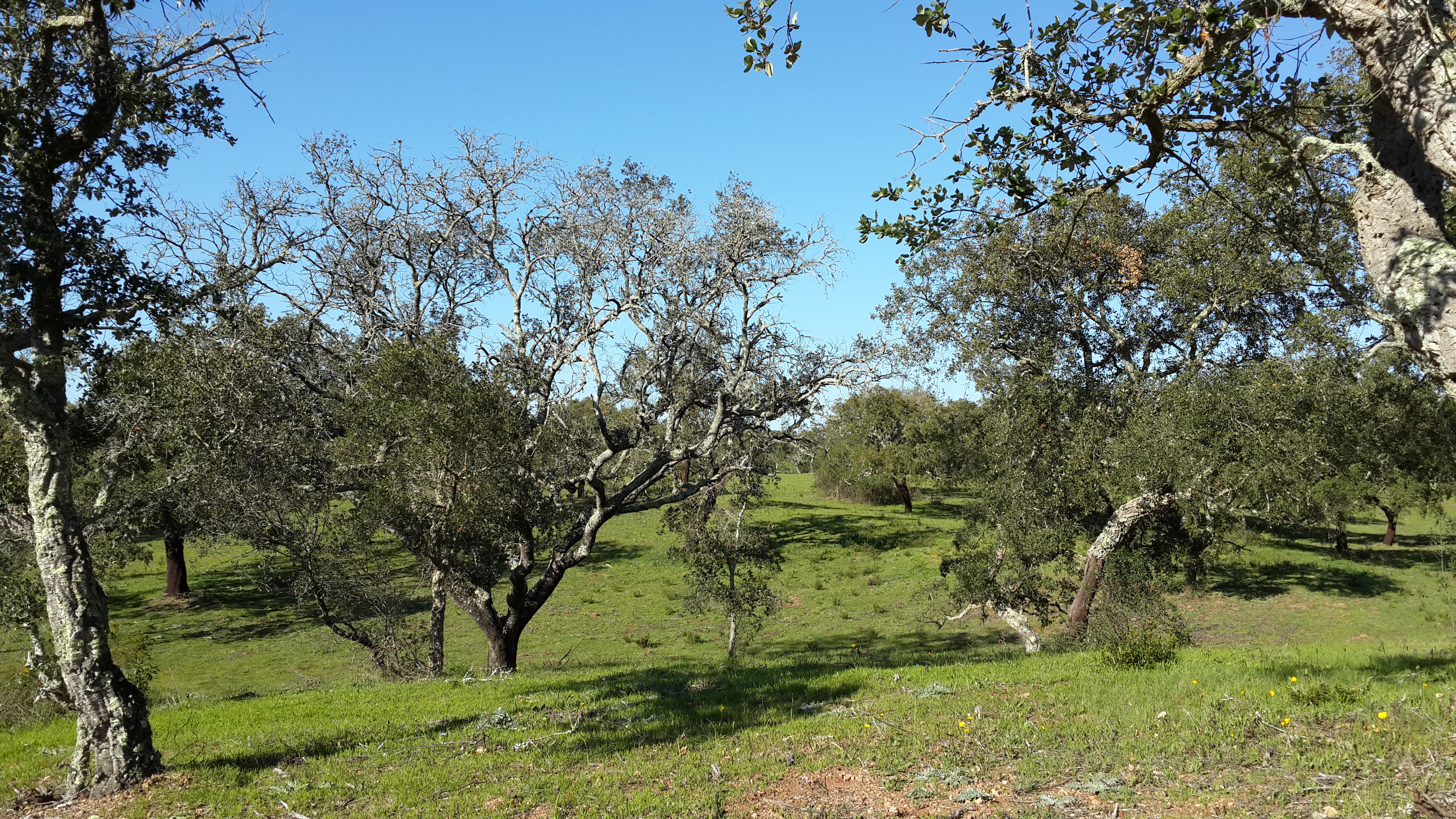
It is not possible to separate the cumulative effect of: climate change, soil conditions, cultural practices and the presence of biotic agents, the way the trees die, due to progressive decrepitude or sudden death, as well as the physiological processes involved that are necessarily different and must be treated differently when deciding on the urgency and the period of dead trees felling, the management of the wood material, forestry residues and subsequent options for afforestation, natural regeneration or conversion to another species.
This factsheet aims to highlight some of the pests that cause mortality and the different management of the dead trees according to the biotic agent present.
Worldwide, there has been an increase in the mortality rate of trees, associated with drought and / or high temperatures, which has been considered by some authors as a way of responding to climate change, namely global warming (1) . The cork oak forests have also witnessed a phenomenon of loss of vitality, with the contribution of several factors like climate change and management practices. The increase in the period of water stress, the best conditions for the development of plagues and diseases and bad cultural practices culminate in the death of the cork oaks.
The management of the dead trees should be different acording to the plague/ disease that is present, to minimize the spreading inside the farm.
For the case of Platypus (and Xyleborus): quick removal of the felled wood; in case of permanence of the wood inside the farm, open the logs to expose the platypus galleries and cover the wood piles with polyethylene (solarization effect); in the field, cover the stumps with soil or brush them with insecticide to avoid dispersion of the insects.
In the case of Hypoxylon mediterraneum: minimize the affected logs transportation inside the farm; proceed with a carefull destruction of the wood residues (branches) with fire.
In case of Phytophthora: leave the fellings in infected areas to last; do not realize the felling in wet soil conditions, to minimize the soil particles transport on tractor wheels or shoes to the non infected areas; reduce the transport outside the roads and rails.
- Annual marking of cork oaks and dead holm oaks, if possible with georeferenciation;
- Request for felling authorization (if applicable);
- Identification of the main causes of mortality by assessing the signs and symptoms present;
- Collect and realize laboratory analysis of soil samples and / or vegetal material, when necessary to identify the biotic agents present;
- Planning and carrying out annual felling of dead trees, adapting the measures to be implemented to the main causes identified;
- Hire qualified personnel and maintain regular monitoring of the work.
Dead trees are not always a danger in terms of the spread of pests and diseases. In forests without vitality problems, trees with no obvious signs of pests and diseases can represent a benefit in terms of ecosystem biodiversity. This benefit consists of making available new ecological niches and habitats, such as cavities, which exist only in older trees, for nesting birds and bat shelters, or dead wood, where new decomposing fungi and bacteria ensure the return of nutrients to the soil.
Although several studies had been carried out in the last decade in order to identify major causes for cork oak mortality, the fact that it may be a consorcium of factors contributing for the tree death increases the complexity of the phenomena and the difficulty in the implementation of preventive measures in order to avoid or decrease tree mortality. Additional studies must be done to acess cork oak decline previously to visible signs and syptoms; establishing dinamic risk maps according to expected climate change, soils type and pest monitorization in order to provide some tools in terms of forest management and best practices.
Conceição Santos Silva, mcssilva@unac.pt, www.unac.pt
Further information
(1) Allen, C.D.; Macalady, A.K.; Chenchouni, H.; Bachelet, D.; McDowell, N.; Vennetier, M.; Kitzberger, T.; Rigling, A.; Breshears, D.D.; Hogg, E.H.T.; Gonzalez, P.; Fensham, R.; Zheng, Z; Castro, J.; Demidova, N.; Lim, J.; Allard, G.; Running, S.W.; Semerci, A.; Cobb, N.,2009 – A global overview of drought and heat-induced tree mortality reveals emerging climate change risks for forests. Forest Ecology and Management, n.º 259 pp.660-684.
(2) David, T.S.; Pinto, C.A.; Nadezhdina, N.; David, J.S., 2016 – Water and forests in the Mediterranean hot climate zone: a revies based on a hydraulic interpretation of tree functioning. Forest Systems, Vol. 25.Issue 2.eR02. INIA.
(3) Hartmann, H., 2015 – Carbon starvation during drought-induced tree mortality – are we chasing a myth? Journal of plant hydraulics 2: e-005.
(4) Sousa, E.; Santos, M.N.; Varela, M.C.; Henriques, J., 2007 – Perda de vigor dos montados de sobro e azinho: análise da situação e perspectivas. Ed. DGRF e INIAV.
Conceição Santos Silva

The symptoms of a decrepit cork oak are: presence of dry branches and twigs on the outside of the canopy; exudations on the trunks and branches; defoliation and/ or microfile (small leaves).
Credits: APFC - Coruche Private Forest Landowners Association
